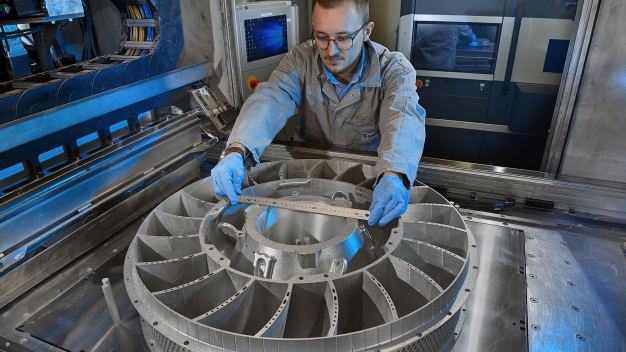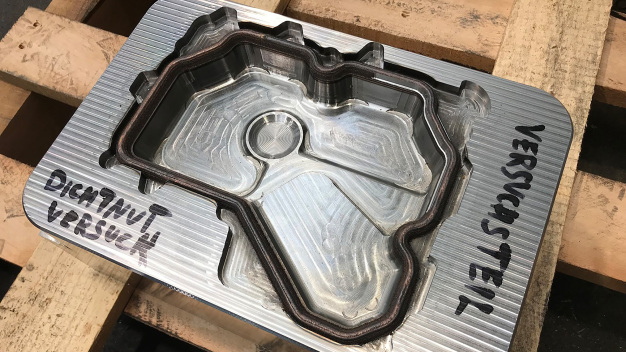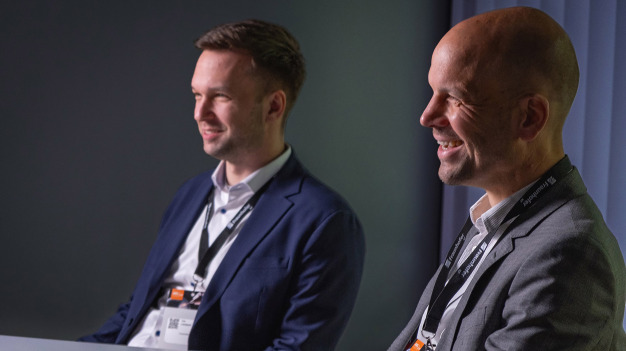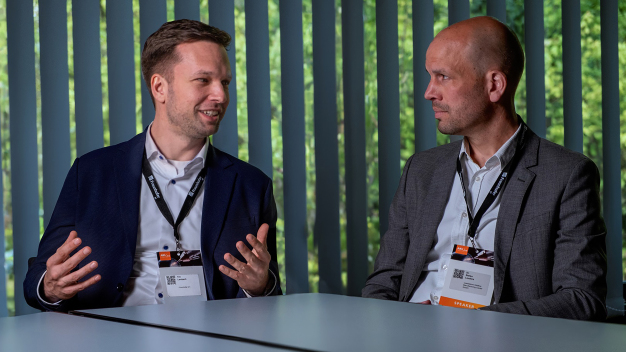- 3D printing
Additive Manufacturing in the throes of technological change
Additive Manufacturing, particularly metal 3D printing, has evolved from a promising technology to a serious constituent of industrial production. Industries such as plant engineering, aerospace, automotive and metalworking are facing a technological transformation that could have far-reaching implications for design, production and sustainability. Dr. Stefan Leuders, head of Technology & Innovation at voestalpine Additive Manufacturing Center GmbH, Düsseldorf, and Dr. Tim Lantzsch, head of Laser Powder Bed Fusion at the Fraunhofer Institute for Laser Technology ILT, Aachen, discuss the current trends in Additive Manufacturing (AM), analyze the opportunities and risks, and show which industries can particularly benefit.
We are delighted to talk to two renowned experts about the future of 3D printing. What are the current trends in Additive Manufacturing? Which developments do you think are promising?
Dr. Tim Lantzsch: An important trend I see is that materials and applications are increasingly being adapted to the specific requirements of Additive Manufacturing. Many of the materials used to date were not originally developed for additive processes. We also see that although the technology is expensive, its added value can be highlighted more clearly by reducing costs and focusing on niche applications.
Dr. Stefan Leuders: The current trends in Additive Manufacturing are strongly focused on working out how the specific advantages of the technology can be applied more comprehensively and, of course, making better use of them. What I find particularly promising is the increasing willingness to rethink long-standing development approaches and not to apply them one-to-one to new products that may later be manufactured using an additive process route. For me, it's not primarily about replacing existing processes, but rather about increasing product benefits through AM.
"Too expensive" is something you hear time and again in connection with AM. What economic challenges of Additive Manufacturing are you dealing with?
Dr. Tim Lantzsch: The main economic challenges lie in the high costs of systems and materials. These costs largely determine the component prices, and there is still considerable scope for optimization here. Furthermore, process reliability, which is not yet widespread, is a particularly relevant factor. We are working on developing Additive Manufacturing from a specialist niche into a robust, widely applicable technology that is also competitive in mass production.
Dr. Stefan Leuders: A key economic factor is still the hourly plant rate, I agree. However, we are seeing increasing movement in terms of system costs, driven in particular by non-European competition, which of course also increases the proportion of costs accounted for by the material used and therefore also increases the pressure to reduce costs. Nevertheless, the issue of cost reduction with regard to the industrial use of AM remains an essential key to being able to open up further fields of application in the future.
In your opinion, what are the potentials and limitations of Additive Manufacturing? What can AM offer us, particularly in terms of sustainability?
Dr. Stefan Leuders: Additive Manufacturing offers considerable potential for sustainability, particularly because it could drastically reduce the amount of material used. In contrast to subtractive manufacturing processes, only the material that is actually needed for the component is melted. In the later usage phase there are also often advantages, such as reduced scrap rates or shorter cycle times in aluminum die casting or plastic injection molding, which are made possible by additively manufactured tools with conformal cooling. Another important aspect is the repair and reconditioning of tools and components, which is made much easier by AM. This can significantly extend the service life of products and therefore also reduce the consumption of resources. However, there are also challenges: Since the technology is still relatively new for industrial use, there is still a need to optimize automation and process reliability, among other things.
Dr. Tim Lantzsch: The potential of Additive Manufacturing lies primarily in its ability to create complex geometries and tailor-made solutions that would hardly be possible, if at all, with traditional processes. And of course, the targeted use of materials, where only the material that is actually needed is processed, can significantly reduce the consumption of resources. This is particularly relevant when you consider the entire life cycle of a product. However, we must also bear in mind that the production and processing of the material is energy-intensive. In addition, integration into existing production processes is often difficult, as AM is still frequently regarded as a stand-alone technology.
What technological hurdles is Additive Manufacturing currently facing and what are you researching?
Dr. Stefan Leuders: A crucial point for us is the development of new process routes in order to meet the technical and economic requirements of our customers. The design and layout of the components and tools manufactured in this way also play a significant role. In addition, AM at voestalpine is, of course, closely linked to the topic of "materials." Within the Group, we are working intensively on the development of new materials and their post-treatment in order to fully exploit the technological potential of AM.
Dr. Tim Lantzsch: Exactly, one of the biggest technological hurdles that Additive Manufacturing is currently facing is the variety of materials . Many of the materials currently used were not originally developed for Additive Manufacturing, which often leads to compromises in quality and performance. For this reason, we are cooperating with material manufacturers to accelerate the qualification of new materials for Additive Manufacturing.
At Fraunhofer ILT, we are also working intensively on improving process reliability and further developing existing systems so that additive processes can be used more stably and efficiently. Another major topic is the standardization of processes to guarantee consistent quality in mass production.
So the industry is slowly but surely changing. Who are the winners of this development in Additive Manufacturing?
Dr. Stefan Leuders: The long-term winners are the companies that are prepared to invest strategically in new technologies and can deal with the associated uncertainties at the same time. Prominent examples from the recent past can be found in the aerospace and medical technology sectors. For me, however, it is not just a question of economic resources, but sometimes also a question of corporate culture.
On the other hand, industries and companies that are heavily dependent on cost-driven mass production will tend to find it more difficult. However, there are also enough fields of application here, just much more in toolmaking and less in the end product.
Dr. Tim Lantzsch: I agree. The clear winners of this development are industries that rely on customized, highly complex components and can take full advantage of the flexibility and design freedom that Additive Manufacturing offers. In aerospace and medical technology, AM opens up enormous opportunities to optimize components while reducing weight and material usage. High-end automotive engineering and motorsport will also benefit from the possibilities of Additive Manufacturing, particularly through the production of lighter and more powerful components.
Thank you very much for this interesting interview.
Visit us from November 19th to 22nd in Frankfurt am Main, Germany, at the formnext fair at the Fraunhofer booth in hall 11, booth D31, to learn more about the possibilities of AM.
Fraunhofer-Institut für Lasertechnik ILT
52074 Aachen
Germany













